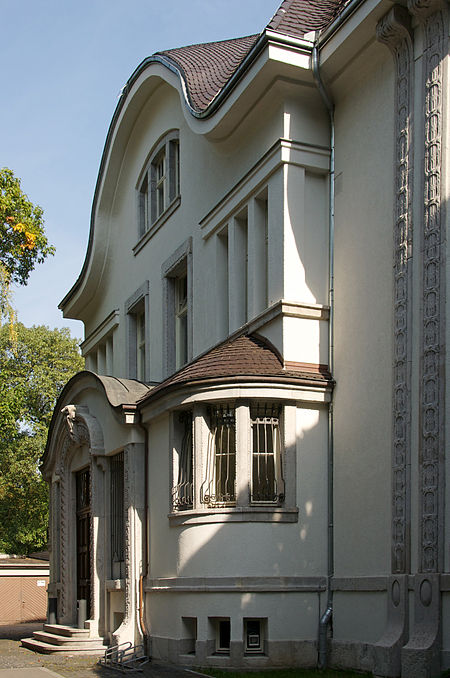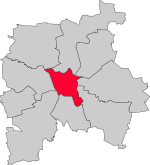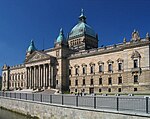German Institute for Literature
Leipzig UniversitySaxony building and structure stubs

The German Institute for Literature (German: Deutsches Literaturinstitut Leipzig, DLL) is a part of Leipzig University. It was founded in 1955 under the name Johannes R. Becher-Institut. Among the noted writers who graduated from the school are Heinz Czechowski, Kurt Drawert, Adolf Endler, Ralph Giordano, Kerstin Hensel, Sarah and Rainer Kirsch, Angela Krauß, Erich Loest, Fred Wander, Clemens Meyer, Juli Zeh, Kristof Magnusson, Anna Kaleri and Volker Altwasser and Werner Bernreuther. Closed in 1990, the institute was refounded in 1995. Currently, Hans-Ulrich Treichel, Josef Haslinger and Michael Lentz are professors.
Excerpt from the Wikipedia article German Institute for Literature (License: CC BY-SA 3.0, Authors, Images).German Institute for Literature
Wächterstraße, Leipzig center south (Mitte)
Geographical coordinates (GPS) Address External links Nearby Places Show on map
Geographical coordinates (GPS)
| Latitude | Longitude |
|---|---|
| N 51.3338 ° | E 12.3675 ° |
Address
Deutsches Literaturinstitut
Wächterstraße 34
04107 Leipzig, center south (Mitte)
Saxony, Germany
Open on Google Maps











